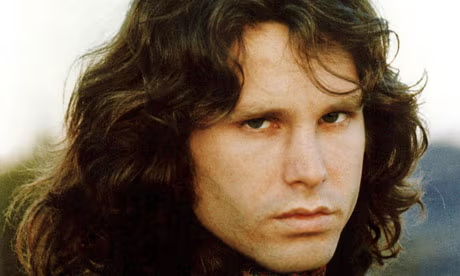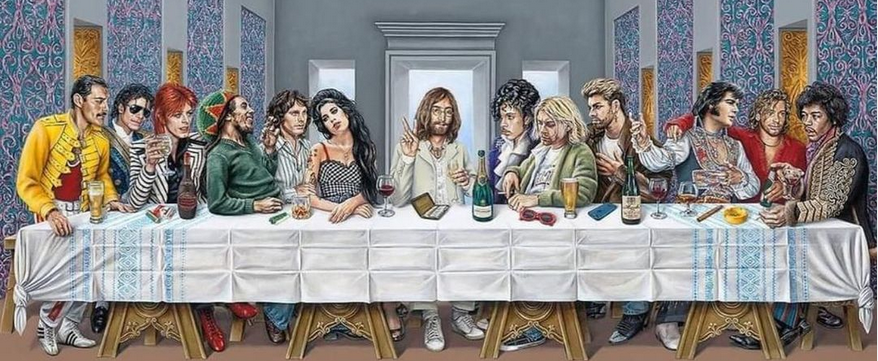
Jim Morrison: The Lizard King and His Mythic Legacy
Jim Morrison was more than just a rock star; he was a cultural icon, a poet, and a symbol of the rebellious spirit of the 1960s. As the lead singer of The Doors, Morrison’s electrifying stage presence, provocative lyrics, and magnetic persona catapulted him to fame.
But Morrison’s life and career were short-lived, punctuated by his premature death at the age of 27, a fate he shares with other members of the infamous “27 Club,” including Jimi Hendrix, Janis Joplin, and Kurt Cobain. His legacy endures not only through The Doors’ music but also through his enigmatic persona, poetry, and the mythology that surrounds him. To understand Jim Morrison is to delve into the intersection of art, fame, and self-destruction, where genius often teeters on the edge of madness.
Early Life and Influence
James Douglas Morrison was born on December 8, 1943, in Melbourne, Florida, into a military family. His father, George Stephen Morrison, was a high-ranking U.S. Navy officer, which led to a nomadic childhood for young Jim. He spent much of his early life moving from base to base, an experience that may have fostered his introspective nature and sense of isolation. His relationship with his parents, particularly his father, was strained. Morrison later claimed that he had no family, and once famously told a reporter that his parents were dead, though they were very much alive.
Jim Morrison was an intelligent and curious child, known for his interest in literature, philosophy, and poetry. He was deeply influenced by the works of French poet Arthur Rimbaud, philosopher Friedrich Nietzsche, and American writers like Jack Kerouac and Allen Ginsberg. Morrison’s fascination with existentialism, the human condition, and the darker sides of life would later manifest in his lyrics and poetry. He once described his childhood as a time when he was deeply affected by a car accident he witnessed, in which a Native American family died. Morrison believed that the spirit of one of the victims entered his soul, a story he recounted in the song “Peace Frog.”
The Formation of The Doors
In 1965, while attending UCLA’s film school, Morrison met Ray Manzarek, a fellow student and keyboardist. The two shared a deep appreciation for music and literature, and they soon decided to form a band. With Manzarek on keyboards, they recruited guitarist Robby Krieger and drummer John Densmore. The band was named after Aldous Huxley’s book The Doors of Perception, which explored the effects of psychedelic drugs and was itself a reference to a line from William Blake: “If the doors of perception were cleansed, everything would appear to man as it is, infinite.”
The Doors quickly gained attention for their unique sound, which blended rock, blues, jazz, and classical influences. Unlike other bands of the era, The Doors had no bass player; Manzarek played the bass lines on a keyboard, giving the band a distinctive sound. Morrison’s deep, baritone voice, poetic lyrics, and theatrical stage presence became the band’s defining features. His performances often verged on the dangerous and chaotic, earning him a reputation as both a genius and a madman.
Fame, Lyrics, and the Dark Side of the Psyche
The Doors’ self-titled debut album, released in 1967, featured the hit single “Light My Fire,” which propelled them to fame. The album was a fusion of dark, brooding lyrics and innovative musical arrangements. “The End,” one of the most controversial songs on the album, was a sprawling, 12-minute epic that delved into themes of death, violence, and incest. Jim Morrison’s lyrics were unapologetically bold and often provocative, challenging social norms and pushing the boundaries of what was acceptable in rock music.
.
.
Morrison’s fascination with death and the darker aspects of life became central to his persona. Songs like “The End,” “When the Music’s Over,” and “Riders on the Storm” showcased his existential concerns and his belief that life was fleeting and unpredictable. He often invoked images of apocalypse, chaos, and transformation, and his live performances reflected this. On stage, Morrison would lose himself in the music, sometimes to the point of self-destruction. His erratic behavior, fueled by drugs and alcohol, added to his mythic status but also alienated many people.
Jim Morrison’s lyrics were not just reflections of his inner turmoil; they were also deeply philosophical. He drew from the works of Nietzsche, Blake, and the French Symbolists, exploring themes of freedom, existentialism, and the nature of reality. Morrison saw himself as a shaman, someone who could guide his audience through an experience that transcended the mundane. He once said, “I see myself as a huge fiery comet, a shooting star. Everyone stops, points up and gasps ‘Oh look at that!’ Then—whoosh, and I’m gone… and they’ll never see anything like it ever again, and they won’t be able to forget me—ever.”
The Icon of Rebellion
Morrison’s appeal lay not just in his music but also in his embodiment of the rebellious spirit of the 1960s. He challenged authority at every turn, from his on-stage confrontations with the police to his public obscenity trial in 1969. During a performance in Miami, Morrison allegedly exposed himself to the audience, leading to his arrest and a highly publicized trial. Although some accounts suggest that Morrison never actually exposed himself, the incident contributed to his growing image as a countercultural icon.
Jim Morrison’s rebellion was not limited to his defiance of social norms; it was also deeply personal. He rebelled against his family, his education, and even his own fame. Despite his success, Morrison was uncomfortable with his celebrity status, and he often retreated into himself. He once told a friend, “I’m interested in anything about revolt, disorder, chaos—especially activity that seems to have no meaning.” His self-destructive tendencies became more pronounced as his career progressed, and by the early 1970s, Morrison was increasingly disillusioned with the rock star lifestyle.
Death and the “27 Club”
In 1971, Morrison moved to Paris with his longtime girlfriend, Pamela Courson, in an attempt to escape the pressures of fame and focus on his poetry. But his time in Paris was short-lived. On July 3, 1971, Jim Morrison was found dead in the bathtub of his apartment. The official cause of death was listed as heart failure, although no autopsy was performed, leading to endless speculation about the true cause of his death. Some believe that Morrison died of a drug overdose, while others suggest that he faked his death and is still alive.
.

.
Jim Morrison’s death at the age of 27 placed him in the pantheon of rock stars who died young, joining Jimi Hendrix and Janis Joplin, who had also died at 27 within the same year. This eerie coincidence gave rise to the myth of the “27 Club,” a term used to describe the phenomenon of influential musicians and artists dying at the age of 27.
Legacy
More than five decades after his death, Jim Morrison’s legacy endures. The Doors’ music remains iconic, with songs like “Light My Fire,” “Break on Through (To the Other Side),” and “People Are Strange” continuing to resonate with new generations of listeners. Morrison’s poetry and writings, including his posthumously published volumes The Lords and the New Creatures and Wilderness, have earned him recognition as a serious poet, not just a rock lyricist.
Jim Morrison’s life, marked by genius, rebellion, and self-destruction, continues to captivate and inspire. He was a man of contradictions—a poet and a provocateur, a seeker of truth and a destroyer of convention. In his short but impactful life, Morrison became a symbol of the counterculture movement, forever remembered as the enigmatic “Lizard King” who could do anything but outrun his demons.
Check out Jim Morrison on Amazon.
Check out The Doors on Amazon.
.


Pingback: Jimi Hendrix died September 18, 1970. - Dead Musicians
Pingback: Amy Winehouse died July 23, 2011. - Dead Musicians
Pingback: Michael Hutchence died on November 22, 1997 - Dead Musicians
Pingback: Musicians in the 27 Club - Dead Musicians